Throughout history, the easiest way for women to create a world in which they’re treated equally—or rule outright—has been to write that world into existence through fiction. As women have fought for and claimed their rights in the real world, those fictional worlds found in science fiction and fantasy have shifted and evolved, too. See our list below of ten books which trace that progress through more than 100 years.
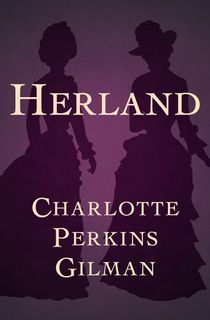
Herland
1915
Written before women in the United States even had the right to vote, Herland was far ahead of its time in terms of its portrayal of women as equal to men and its politics outside of feminism. Three men find their way to a society composed entirely of women. Having been cut off from the larger world for millennia and miraculously developed the ability to procreate without men, their society throws the men for a loop when they compare it to their own—drawing a range of reactions from the trio as the Herlandian ways expose the hypocrisies and fallacies of what they’ve always accepted as the natural relationship between the sexes. That the male characters intrude upon the women of Herland shows how the ideas of male dominance originate not from nature, but rather are a societal imposition.
RELATED: 16 Impactful female Science Fiction and Fantasy Authors
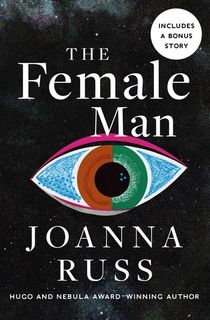
The Female Man
1975
Encapsulating how unique the female experience is to each woman, Joanna Russ’ The Female Man brings four women—or really just one woman—from parallel universes together and introduces them to the societal and situational circumstances that helped shape each of them. A precursor of sorts to the intersectionality in feminism that’s more widely recognized today, The Female Man explores the relationship between women’s identities and the societies that produced them—as well as the desires that stem from what those societies value and where the lines are for those who don’t conform. Where Herland only really addressed heterosexuality, The Female Man brings homosexuality into the conversation.
RELATED: The Enduring Anger of Joanna Russ

The Handmaid's Tale
1985
For many feminists, the circumstances in The Handmaid’s Tale are their worst nightmare—women are stripped of all rights to their own bodies, raped and forced to carry children to term, and then those children are ripped from their custody and given to their rapists. The recent adaptation of the novel has expanded the horrific world Atwood envisioned and has helped to underscore what makes the story so feminist at its heart. In addition to depicting the ways many women in Gilead fight back, Atwood’s handmaid protagonist, June, also recounts the gradual decline that led to Gilead. It shows just how easily compromising on some issues can lead to compromising on more and more until women’s rights are nonexistent.
RELATED: 10 Books Like The Handmaid's Tale
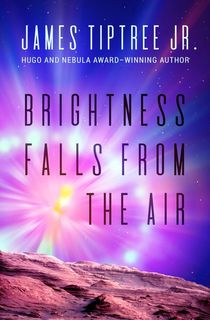
Brightness Falls from the Air
1985
There are some novels that adhere to strict genre tropes, and then there are those like Brightness Falls from the Air that blend genre. While the novel blends science fiction with an action/thriller plot, it’s a book that, along with its author, continues to prove controversial. At its publication, the unblinking subversion of gender roles with women respected in unquestioned positions of power made it noteworthy—a subversion exemplified in author Alice Bradley Sheldon’s use of the masculine pen name James Tiptree Jr. for twenty years, with her true identity coming to light halfway through that period.
RELATED: Sci-Fi and Fantasy Books Featuring Multidimensional Characters
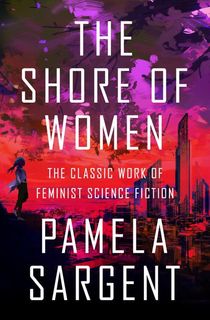
The Shore of Women
1986
Though there have always been some who paint feminists as women who want to dominate men, Pamela Sargent’s The Shore of Women captures the true goal of feminism—equality amongst the sexes. How? By showing that women can be just as oppressive as men given the chance—and that neither sex is better than the other. It challenged both the idealization of women as paragons of virtue and the idea that they are naturally weaker. It is through coming together that a livable and lasting future can be forged.
RELATED: Star Trek's Nichelle Nichols Goes to Court Over Guardianship Issues
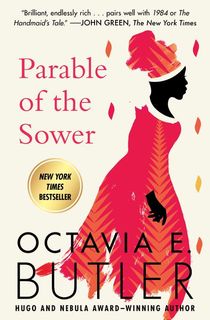
Parable of the Sower
1993
There are many subjects at play in Octavia Butler’s Parable of the Sower that are more overt than its feminist themes—the threat of global warming, the compromises of democracy in a capitalist society, racism, and wealth disparity. But in the protagonist of Lauren Oya Olamina, Butler created a multi-faceted female character who lives a very modern and understated brand of feminism. Women have long been associated with empathy—a trait that has been tied to irrationality and interfering with one’s ability to reason. For Lauren, her hyperempathy allows her to see a different path for herself and gives her the strength and conviction to pursue it, despite all the challenges she faces as a young, poor, black woman in a violent, crumbling, and desperate society.
RELATED: Truth Is Change: The Evolution of Octavia Butler's Cover Art

Stardust
1998
We don’t always need to look to the future through science fiction to find a world that is rewritten with feminist ideas. Fantasy often does the same within a setting more akin to times gone by—some more recent and familiar than others. The film adaptation of Neil Gaiman’s Stardust does no justice to the feminist threads that are carefully woven through the novel’s pages. While the sons of Stormhold battle each other to rule the kingdom, it is the female characters of the novel who play the crucial roles in the larger story. Though in many fantasy stories the female characters’ plots revolve around the males’, by the time you finish the epilogue of Stardust, you realize just how much the opposite is true.

The Lunar Chronicles Series
2012—2015
Cinderella is a cyborg, Little Red Riding Hood meets a genetically altered man-wolf, Rapunzel’s isolated tower is a satellite in space, and Snow White isn’t white. Marissa Meyer’s Lunar Chronicles series takes several familiar fairy tales out of the middle ages and shoots them several millennia into the future. What makes this series feminist from a modern perspective is the diversity and depth of the female characters. Each has vastly different strengths and weaknesses, both physical and psychological, yet they work together and support one another as they fight to thwart the evil queen’s plans for global domination. Showing female characters as well-rounded, imperfect, and not always at each others’ throats fighting over a man remains surprisingly progressive, even today.

A Court of Thorns and Roses Series
2015—Present
As with her Throne of Glass series before it, Sarah J. Maas’ A Court of Thorns and Roses series grows deeper with each new book, especially in its portrayal of social equality—starting with highlighting equality between the male and female characters. While the societies in the series begin with rigid social and gender structures and traditions, the forces working to change that take center stage as the series progresses. Also delving into the lingering struggle against trauma and abusive relationships—both physical and emotional, intentionally manipulative and those that become toxic gradually—this series tackles feminist issues in both overt and subtle ways (like in the casual reference to male birth control, for instance).
RELATED: You Need to Read Sarah J. Maas' A Court of Thorns and Roses

A Crown of Wishes
2017
Delving into the fantastical realm of Indian mythology, Roshani Chokshi’s Star-Touched series explores many ways women in a male-dominated culture can subvert expectations and find power even in the limitations of the roles open to them at first glance. The second novel of the series, A Crown of Wishes, delves deep into themes of narrative and choice. While there’s no doubt heroine, Gauri, takes pride in defying the men in charge of her life, it is not through overthrowing them—her initial plan, which fails—but through cooperation with a young prince that two kingdoms find a peaceful and prosperous balance… after an eye-opening trip to the Otherworld to compete in the magical Tournament of Wishes.
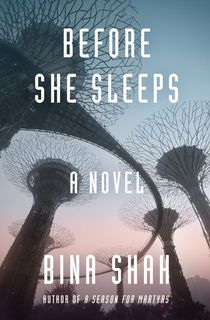
Before She Sleeps
2018
An irreparable balance between the male and female populations of Green City has turned the women into little more than breeders. While the majority has obediently taken multiple husbands, a few brave souls haven’t surrendered so readily. They are part of the underground Panah, an organization that offers freedom through an unusual job: At night, its female members provide a service that no longer exists in their reproduction-obsessed world—intimacy without sex. But though they’re allegedly protected by their wealthy clientele, the women of Panah find that there is little standing between them and their own destruction. Set in a dystopian Southwest Asia, Before She Sleeps tackles many of the subjects found The Handmaid’s Tale, but places them within the context of a repressive Islamic society.
This post is sponsored by Open Road Media. Thank you for supporting our partners, who make it possible for The Portalist to continue publishing the out-of-this-world stories you love.





